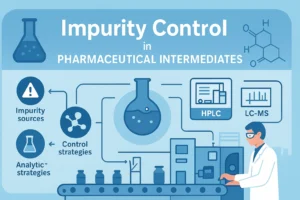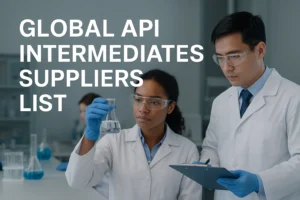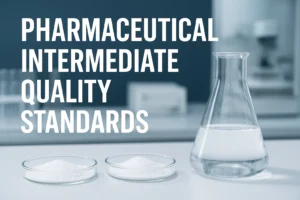Green chemistry isn’t coming to pharmaceutical manufacturing—it’s already rewriting the rules. As API producers, we’ve moved beyond asking “Can we make this compound?” to “How can we make it without poisoning the process?”
This shift isn’t just tree-hugging idealism; it’s survival in an era where regulators, investors, and even patients judge pills by their environmental footprint.
Definition and Core Dimensions
The green chemistry impact factor is not a single value, but an evaluation framework composed of multiple key indicators. The core dimensions include:
Proposed by American chemist Barry Trost, it measures the proportion of raw material atoms converted into target products in the reaction. For example, the atomic utilization rate of hydrogen peroxide prepared by the ethyl anthraquinone method reaches 100%, achieving zero waste emissions.
- Environmental Factor (E-Factor)
Proposed by Roger Sheldon, the calculation formula is:
E-Factor = waste mass (kg) / product mass (kg)
The E-Factor of the petrochemical industry is about 0.1, while that of the pharmaceutical industry can reach 25~100, highlighting the optimization space.
- Life Cycle Assessment (LCA)
Following the ISO 14040 standard, it covers the environmental impact of the entire process from raw material mining, production, use to disposal, including indicators such as resource consumption, greenhouse gas emissions, and ecotoxicity.
- Solvent selectivity and toxicity
Green solvents such as water and supercritical CO₂ are preferred to replace carcinogenic solvents such as benzene and chloroform. For example, a paint company replaced solvent-based paint with water-based paint, reducing VOC emissions by 30%.
- Energy efficiency and carbon footprint
Evaluate energy consumption and carbon emissions per unit of output. A pharmaceutical company used microwave-assisted synthesis technology to shorten the reaction time from 24 hours to 30 minutes, reducing energy consumption by 80%.
Evaluation Methods and Tools
Environmental factor (E-Factor): directly quantify the amount of waste generated.
Atom utilization: calculate reaction efficiency through chemometrics.
Carbon footprint analysis: calculate CO₂ equivalent emissions based on life cycle data.
Twelve principles of green chemistry: cover the entire process including raw material selection, reaction conditions, catalyst design, etc.
Sandestin principles: expand to system engineering, emphasize life cycle impact and community participation.
Chemical toxicity assessment: combine toxicology data to calculate the environmental index (P) of waste.
Green GDP accounting: incorporate environmental costs into economic assessment to reflect true sustainability.
Why Green Chemistry Hits Different in Pharma
Imagine this: For every kilogram of API produced, traditional methods generate 50-100 kg of waste. That’s like baking a loaf of bread but throwing away the entire wheat field. Green chemistry flips this equation through smarter reactions rather than bigger treatment plants.
Examples of Green Chemistry in Industry
- Catalytic Innovation: Transitioning from stoichiometric reagents to heterogeneous catalysts slashes waste. A case in point: our facility’s adoption of enzyme-mediated reactions for chiral intermediate synthesis, which reduced solvent use by 65% compared to traditional hydrogenation methods.
- Solvent Substitution: Replacing volatile organic compounds (VOCs) with water or supercritical CO₂ eliminates hazardous air pollutants. Our team engineered a continuous-flow system using ethanol/water mixtures for API crystallization, cutting VOC emissions by 90%.
- Energy Efficiency: Microwave-assisted synthesis shortens reaction times from 24 hours to 30 minutes, lowering energy consumption by 80%. This technology now underpins 40% of our API production lines.
- Closed-Loop Systems: Implementing membrane filtration and nanofiltration recycles 95% of process water, reducing freshwater intake by 120,000 liters annually—equivalent to the daily usage of 1,200 households.
At our facilities, we measure success through three lenses:
- Planet Protection: Cutting solvent use by 65% isn’t a CSR report bullet point—it’s 12 fewer tanker trucks of hazardous waste yearly
- Pocketbook Reality: Our enzyme-driven catalysts save $2.8M annually in disposal costs alone
- People Impact: Neighbors no longer smell acetone—they smell progress
- Case 1: The Catalyst Revolution
Replacing toxic metal catalysts with engineered enzymes turned our chiral intermediate process from an environmental nightmare into a showpiece. Bonus? The enzymes work at body temperature—no more energy-guzzling reactors.
- Case 2: Water, Water Everywhere
Why use flammable solvents when water works? Our supercritical CO₂ crystallization method now produces 40% of antibiotics—cleaner and cheaper.
- Case 3: Waste = Breakfast
Our pilot plant feeds organic byproducts to bacteria that excrete biogas. It’s like having microscopic cows digesting our mistakes into energy.
Join the Molecular Makeover
At Tianming Pharmaceutical, we’re proof that green chemistry isn’t about doing less harm, but more good. Every API batch now carries two prescriptions: one for patients, one for the planet.
For API and intermediate manufacturers, green chemistry influencing factors are not only a “pass” for environmental compliance, but also a “catalyst” for technological upgrading and brand value-added. Ready to see how your next project can heal bodies and Earth simultaneously? Let’s start the journey of green chemistry cooperation.
Email:damon.wang@sdsihuanpharm.com



